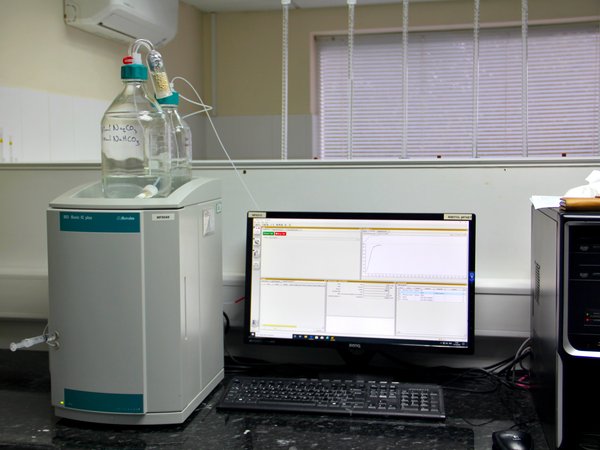What is Ion Chromatography?
Ion-exchange chromatography is a process that separates ions in a sample allowing the identity and concentration of each component in the sample to be determined.
It works by pumping the sample (usually diluted with ultrapure water) through a column filled with ion exchange resins. Each ionic component in the sample interacts slightly differently with the column due to the difference in attraction, causing different flow rates through the column for each components, which leads to separation as they flow out. After the sample has been separated through the column it passes through a conductivity detector which is used to determine what each component is (based on the time) and the concentration of it (based on the conductivity over time).
Ion Chromatography is also sometimes referred to as HPLC or Ion-Exchange Chromatography.
What can it detect ?
- Fluoride ions (F-)
- Chloride ions (Cl-)
- Nitrite ions (NO2-)
- Bromide ions (Br-)
- Nitrate ions (NO3-)
- Sulphate ions (SO42-)
- Phosphate ions (PO43-)
- Chromate ions (CrO42-)
NB: the detection of these ions is sensitive down to ppm (parts per million) levels, therefore very dilute concentrations of the ions can be detected in a sample.
Applications
We can use our ion chromatography machine to analyse a wide range of samples, examples include:
- Effluents
- River/pond water
- Coolant Water
- Mixed acids - for example nitric-hydrofluoric etches for stainless steel or chemical brighteners for aluminium.
- Inorganic contaminants in process solutions or process water.
Additionally, we have the capacity to measure for other ions by other means) and may be able to detect metals by XRF - this is unrelated to ion chromatography but may be useful for some samples. If you are unsure about your sample please contact us and we will be happy to help advise you
Please contact us with details of your sample and we will be happy to give you a quote
